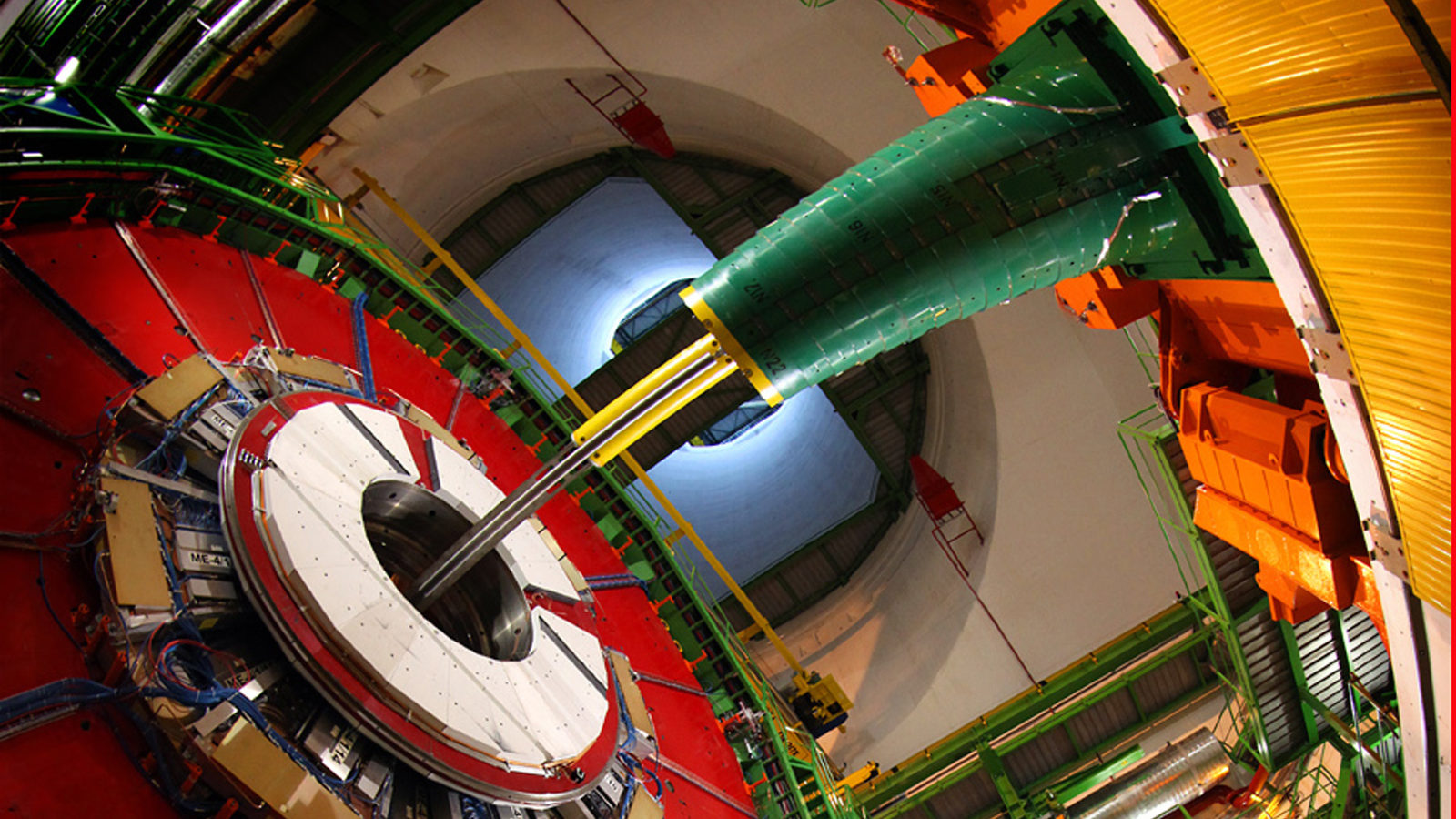The Large Hadron Collider is known for a list of impressive facts—it’s the world’s largest and most powerful particle collider; it accelerates particles to nearly the speed of light; its cryogenic system keeps it colder than outer space.
Now it’s under consideration for a new superlative: Scientists there might have created the most minuscule drop of liquid ever formed in a laboratory.
Last year physicists collided protons with heavier lead ions in the LHC. They found a small but noticeable correspondence between the trajectories of charged particles that sped away from collisions. Newly produced particles appeared to be synced, like a school of fish moving in unison. They dubbed this phenomenon the “ridge effect.”
The CMS experiment (pictured above) studied more proton–lead collisions early this year, and the result, made public this week, suggests that the particles are behaving the way they do in lead–lead collisions, where they are swept along by a drop of plasma. If this is true, the drop formed in proton–lead collisions would be the smallest drop of liquid ever formed in a laboratory.
The fluid is created when nuclei collide and dump a fraction of their energy into the space between them. The violence of the collision creates a medium so hot and dense, their constituent quarks and gluons meld together into something called quark–gluon plasma, a type of matter believed to have existed just after the big bang, before the universe cooled.
Scientists think a drop of hot plasma spurts away from the high-pressure epicenter of collision to lower-pressure areas, and newly created particles are flushed out horizontally around the line of the incoming beam. The fluid cools as it expands, but the droplet remains liquid long enough to sweep particles before it like debris on wave.
“The correlations between particles are consistent with a model of dense, rapidly expanding fluid,” says theorist Piotr Bozek from Akademia Górniczo-Hutnicza and the Institute of Nuclear Physics in Kracow, Poland.
While this model, called collective flow, has been identified as the cause of the ridge effect in collisions of larger nuclei like gold and lead, physicists were surprised to see hints of it in collisions involving protons, which are about 208 times lighter than lead ions.
“According to the folklore around this, you need a lot of volume to support quark–gluon plasma,” says Christof Roland, a Massachusetts Institute of Technology scientist who serves as co-convener of the CMS heavy ion program. “If you look at the geometry of proton–lead collisions, it’s a very small system—it was thought to be too small for this effect to appear, and it still might be.”
While physicists need to continue investigating to find out if they really are seeing collective flow in proton–lead collisions, the evidence has grown since their last study. Earlier, they found correlation between the movements of pairs of particles. Now they see it in groups of four, says Julia Velkovska, a Vanderbilt University scientist who serves as co-convener of the CMS heavy ion program.
“The goal is to have a consistent theory that fits everything we see,” Velkovska says. “Every time we make a new measurement, the theory evolves, and so does our understanding.”



